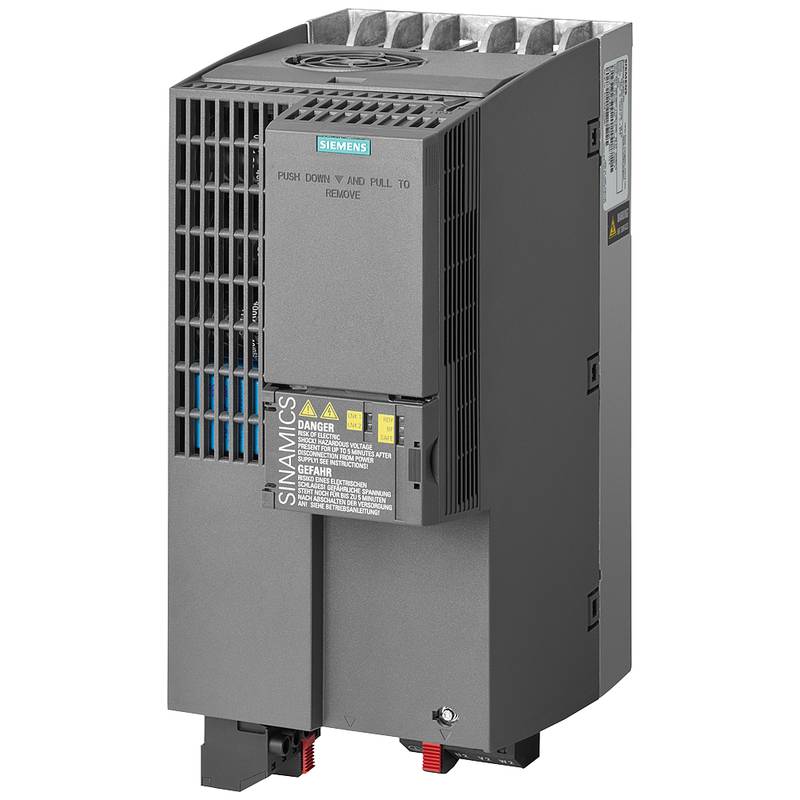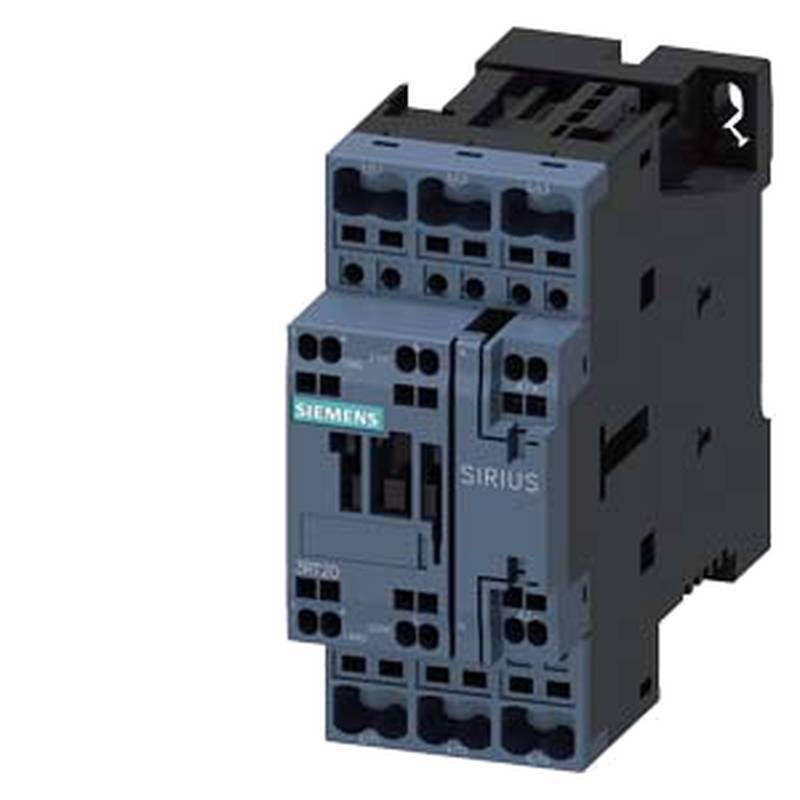
The SIMPHOENIX DL100-4T0007 three-phase input VFD frequency converter, boasting a 0.75kW power rating, emerges as a robust solution for precise motor speed control in demanding industrial environments. This unit distinguishes itself with exceptional energy efficiency, a wide input voltage range, and advanced protection features, ensuring reliable operation and extended equipment lifespan. Its core technical specifications include a rated power of 0.75kW, an input voltage range of 380-440V AC (three-phase), an output voltage of 380V AC, and a maximum output frequency of 400Hz, making it adaptable to diverse operational requirements. The DL100-4T0007 is engineered for high-performance applications where accurate speed regulation and torque control are paramount.
Product Specifications
| Parameter | Value |
| :------------------ | :---------------------------------------- |
| Model | DL100-4T0007 |
| Power Rating | 0.75kW |
| Input Voltage | 380-440V AC (Three-Phase) |
| Output Voltage | 380V AC |
| Output Frequency | 0-400Hz |
| Control Method | V/f Control, Vector Control |
| Protection Class | IP20 |
| Mounting Type | Wall/Din Rail Mounting |
| Dimensions (HxWxD) | 160mm x 90mm x 125mm (approximate) |
Core Features & Market Positioning
The SIMPHOENIX DL100-4T0007 positions itself as a premium, yet cost-effective, variable frequency drive (VFD) for three-phase induction motors. Its key differentiator lies in the adoption of advanced control algorithms, including both V/f control and sensorless vector control, enabling superior speed accuracy and dynamic torque response crucial for applications like conveyors, pumps, and fans. The drive's robust design incorporates comprehensive protection mechanisms against overvoltage, undervoltage, overload, short circuits, and overheating, minimizing downtime and safeguarding connected machinery. This focus on reliability and performance places the DL100-4T0007 as a strong contender against established brands, offering a compelling blend of advanced functionality and operational resilience. Its compact footprint and straightforward installation further enhance its appeal in space-constrained industrial settings.
Key Application Scenarios
This SIMPHOENIX DL100-4T0007 frequency converter is ideally suited for a wide spectrum of industrial applications demanding precise motor speed manipulation and energy savings. It excels in pump and fan control, where variable speed operation can lead to significant energy consumption reductions and optimized system performance. In the manufacturing sector, it finds utility in conveyor systems, mixers, extruders, and machine tools, providing the necessary torque and speed precision for automated production lines. Textile machinery, packaging equipment, and HVAC systems also benefit from the smooth, controlled operation facilitated by this VFD, ensuring consistent product quality and reduced mechanical stress on equipment. Its three-phase input capability makes it directly compatible with standard industrial power supplies.
Practical System Integration Guidance
Integrating the SIMPHOENIX DL100-4T0007 into an existing system is streamlined due to its user-friendly design and clear terminal layout. Proper wiring is critical; ensure the main power input terminals (L1, L2, L3) are connected to the three-phase AC supply, and the motor output terminals (T1, T2, T3) are correctly wired to the three-phase motor. For control signals, utilize the designated digital and analog input terminals for functions like start/stop commands, speed reference signals (e.g., 0-10V or 4-20mA), and external fault inputs. Parameter programming is accessible via the integrated keypad or optional communication modules, allowing for customization of acceleration/deceleration times, overcurrent limits, and specific motor parameters to optimize performance. Always refer to the user manual for precise terminal assignments and default parameter settings before commissioning.
Operation and Risk Mitigation
Safe and efficient operation of the SIMPHOENIX DL100-4T0007 necessitates adherence to established safety protocols and an understanding of its operational parameters. Prior to energizing the drive, verify all electrical connections are secure and that the motor is correctly phased. During operation, monitor the drive's display for any fault codes, such as "OV" (Overvoltage), "UV" (Undervoltage), "OL" (Overload), or "SC" (Short Circuit), and consult the manual for specific troubleshooting steps. To mitigate risks, ensure the VFD is installed in a well-ventilated area, away from excessive dust, moisture, and extreme temperatures, to prevent overheating. Implement appropriate grounding measures to protect against electrical surges and ensure personnel safety during maintenance by disconnecting power and allowing capacitors to discharge.
Scalability & Long-Term Value
The SIMPHOENIX DL100-4T0007 offers significant long-term value through its robust construction and potential for integration into more advanced industrial control systems. While this specific model is designed for individual motor control, its compatibility with standard industrial communication protocols (depending on optional modules) allows for seamless integration into SCADA or PLC-based automation systems. This scalability ensures that as operational needs evolve, the VFD can remain a functional component within a larger, interconnected IIoT infrastructure. The inherent energy savings achieved through precise speed control contribute to reduced operational costs, enhancing the overall return on investment. Furthermore, SIMPHOENIX's commitment to producing reliable industrial automation components suggests a strong support ecosystem and availability of spare parts, contributing to the drive's extended operational life.
---
Frequently Asked Questions (FAQs)
What is the primary function of the SIMPHOENIX DL100-4T0007?
The SIMPHOENIX DL100-4T0007 is a three-phase input VFD designed to control the speed of AC induction motors. It allows for variable speed operation, reducing energy consumption and improving process control.
It achieves this by converting fixed frequency and voltage from the mains supply into variable frequency and voltage for the motor. This enables precise adjustments to motor speed based on real-time demand, unlike traditional fixed-speed drives.
Key benefits include significant energy savings, reduced mechanical wear on machinery, smoother operation, and enhanced process efficiency across various industrial applications.
Can the SIMPHOENIX DL100-4T0007 be used with single-phase motors?
No, the SIMPHOENIX DL100-4T0007 is specifically designed for three-phase AC induction motors. It requires a three-phase power supply for input and outputs power to a three-phase motor.
Using this VFD with a single-phase motor is not recommended and can lead to damage to both the motor and the drive. Special VFDs are available for single-phase motor control, but this model is exclusively for three-phase applications.
Always ensure your motor's specifications match the VFD's requirements to prevent operational issues and potential equipment failure. This model's three-phase input (380-440V AC) is crucial for its intended operation.
What types of protection features are integrated into the DL100-4T0007?
The SIMPHOENIX DL100-4T0007 is equipped with comprehensive protection features to safeguard the drive and the connected motor. These include overcurrent, overvoltage, undervoltage, overload, short-circuit, and overheating protection.
These integrated safety mechanisms help prevent catastrophic failures by automatically shutting down the drive when abnormal conditions are detected. This minimizes potential damage and reduces costly downtime in industrial environments.
By monitoring critical parameters, these features ensure reliable operation and extend the lifespan of the VFD and the motor it controls. Referencing the user manual for specific fault codes is essential for troubleshooting.
How does the DL100-4T0007 achieve energy savings?
Energy savings are achieved by matching the motor's speed to the actual load requirement. Instead of running at full speed constantly, the VFD slows the motor down when less output is needed.
This variable speed operation, particularly for centrifugal loads like fans and pumps, results in substantial energy reductions. The power consumed by a motor is roughly proportional to the cube of its speed.
By precisely controlling speed, the SIMPHOENIX DL100-4T0007 optimizes power consumption, leading to lower electricity bills and a reduced carbon footprint for industrial operations.
What are the typical applications for this frequency converter?
This VFD is ideal for applications requiring precise motor speed control and energy efficiency. Common uses include pumps, fans, blowers, and HVAC systems in commercial and industrial settings.
It is also widely used in manufacturing processes such as conveyor belts, mixers, extruders, machine tools, and packaging equipment where variable speed is crucial for production quality and efficiency.
The DL100-4T0007's robust design and 0.75kW power rating make it suitable for a broad range of industrial machinery where precise torque and speed regulation are paramount.
What is the input voltage range for the SIMPHOENIX DL100-4T0007?
The SIMPHOENIX DL100-4T0007 operates with a three-phase input voltage ranging from 380V AC to 440V AC. This range is standard for many industrial power grids.
It is crucial to ensure that the available power supply matches this specified input voltage to prevent damage to the VFD. Incorrect voltage can lead to malfunction or permanent failure of the unit.
Always verify your site's electrical supply specifications before connecting the DL100-4T0007 to ensure compatibility and safe operation.
What control methods does this VFD support?
The DL100-4T0007 supports both V/f (Volts per Hertz) control and sensorless vector control methods. V/f control is a simpler method suitable for many general-purpose applications.
Sensorless vector control offers more precise speed and torque regulation without the need for motor-mounted encoders. This advanced control method is beneficial for applications requiring high dynamic performance.
The choice between these control methods depends on the specific application requirements for speed accuracy, torque response, and overall system performance optimization.
How is the SIMPHOENIX DL100-4T0007 installed?
Installation typically involves mounting the VFD securely in a suitable location, such as a control panel or wall, ensuring adequate ventilation. Electrical connections for power input, motor output, and control signals must be made according to the wiring diagrams in the user manual.
Proper grounding is essential for safety and to prevent electrical interference. Before powering up, double-check all wiring to ensure correct polarity and secure connections to prevent short circuits or other electrical faults.
Once wiring is complete, basic parameter settings, such as motor data and desired operational modes, should be configured before commissioning the drive to ensure optimal performance and protection.
What does the "0.75kW" rating signify?
The "0.75kW" rating indicates the motor power handling capacity of the SIMPHOENIX DL100-4T0007 frequency converter. This means it is designed to effectively control and power three-phase induction motors with a rated output power of up to 0.75 kilowatts (approximately 1 horsepower).
This power rating is a critical specification for selecting the appropriate VFD for a given motor. Using a VFD rated for a lower power than the motor could lead to overload conditions and damage to the drive.
Conversely, using a VFD with a significantly higher power rating than required is generally unnecessary and can be less cost-effective, though it may offer a margin for future upgrades or specific demanding applications.
Where can I find the user manual for the DL100-4T0007?
The user manual for the SIMPHOENIX DL100-4T0007 is typically available for download directly from the SIMPHOENIX official website. You can usually find a product support or downloads section on their site.
Alternatively, if you purchased the VFD from a distributor or reseller, they may also provide a link or a physical copy of the manual. It is highly recommended to have the manual for detailed installation, programming, and troubleshooting information.
The manual contains vital details on wiring, parameter settings, fault codes, and maintenance procedures specific to this model, ensuring safe and effective operation.
























